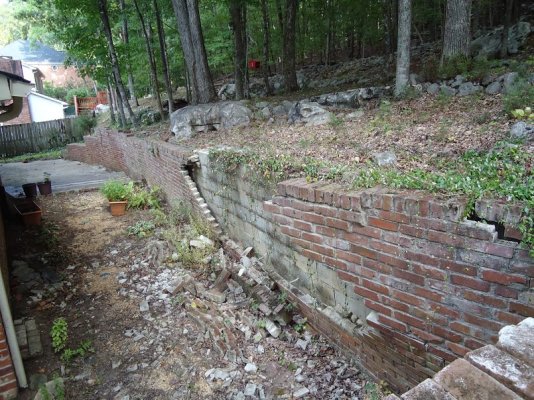So I have this house. I would like to dispose of it. It is located in an area where the RE market is very, very slow. Houses sit on average 1-2 years on the market and generally sell after several price reductions. The house itself is in good condition, but it sits on a sloped piece of land and the retention wall behind the house (about 5' tall and 30ft long) is starting to lean dangerously and needs to be replaced before selling. According to my RE agent it's a safety issue and it needs to be addressed before putting the house on the market. I have gotten some estimates to replace the wall and they run high, about 20% of property value (steep driveway, tight access to the back of the house means more manual labor, wall must be designed by an engineer per code because it is more than 4' tall etc...).
In addition, the RE agent estimates that we would have to pay nearly 9% of property value in commissions and closing costs. So, even if we sell at full price, we'd get back only about 70% of what the house is currently appraised for, after months of repair work and maybe another year or two of the house sitting on the market. And that's assuming we don't have to go through price reductions.
We were thinking about making a sizable contribution to our donor-advised fund (DAF) at the end of this year and I am now thinking about donating this property to the fund. First, we get to deduct the full value of the house from our current high income. We are well within the 39.6% marginal tax bracket at the Federal level, and the 11.3% marginal tax bracket in California. So if we donated the property, the immediate income tax savings would be quite significant. I quite like the idea of not going through the traditional sale process with its many frustrations.
Has anyone done anything like it? Any pitfalls?
In addition, the RE agent estimates that we would have to pay nearly 9% of property value in commissions and closing costs. So, even if we sell at full price, we'd get back only about 70% of what the house is currently appraised for, after months of repair work and maybe another year or two of the house sitting on the market. And that's assuming we don't have to go through price reductions.
We were thinking about making a sizable contribution to our donor-advised fund (DAF) at the end of this year and I am now thinking about donating this property to the fund. First, we get to deduct the full value of the house from our current high income. We are well within the 39.6% marginal tax bracket at the Federal level, and the 11.3% marginal tax bracket in California. So if we donated the property, the immediate income tax savings would be quite significant. I quite like the idea of not going through the traditional sale process with its many frustrations.
Has anyone done anything like it? Any pitfalls?

